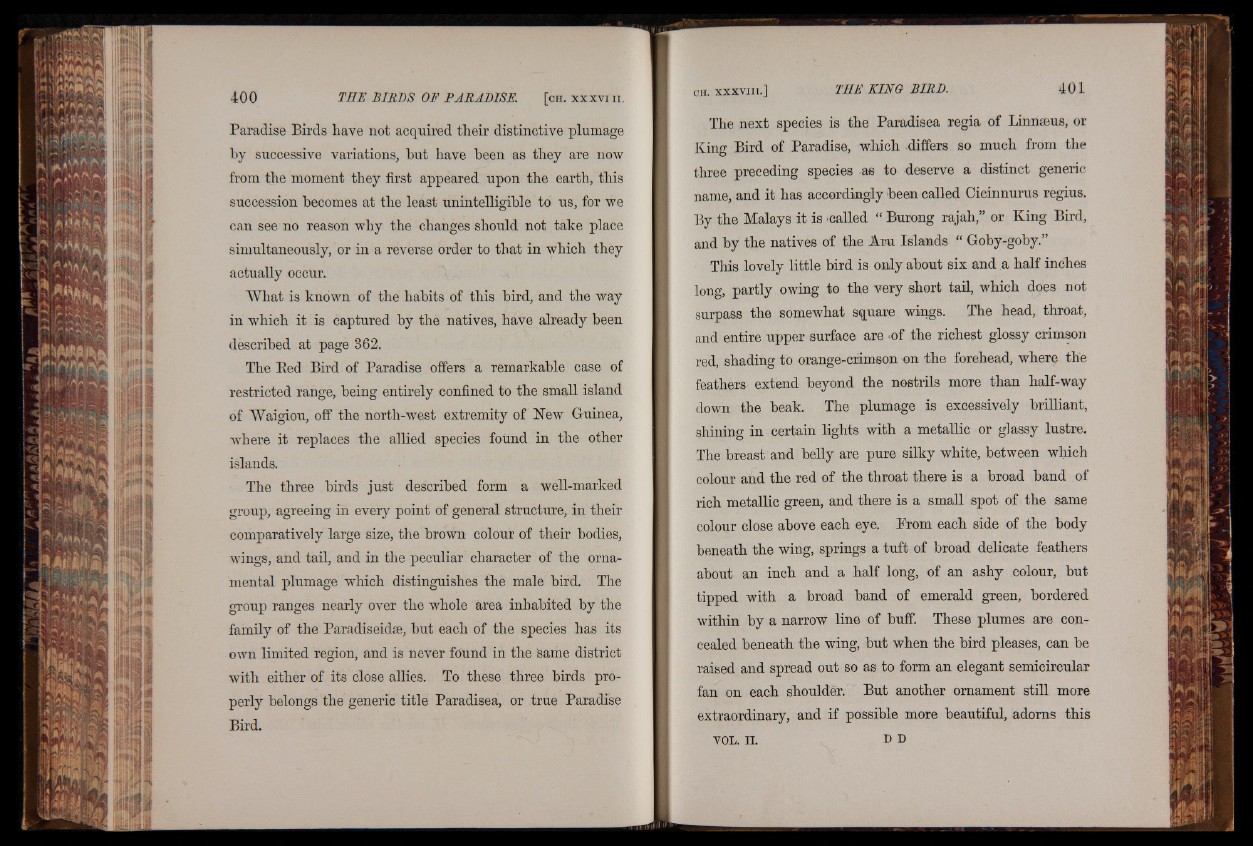
Paradise Birds have not acquired their distinctive plumage
by successive variations, hut have been as they are now
from the moment they first appeared upon the earth, this
succession becomes at the least unintelligible to us, for we
can see no reason why the changes should not take place
simultaneously, or in a reverse order to that in which they
actually occur.
What is known of the habits of this bird, and the way
in which it is captured by the natives, have already been
described at page 362.
The Bed Bird of Paradise offers a remarkable case of
restricted range, being entirely confined to the small island
of Waigiou, off the north-west extremity of New Guinea,
where it replaces the allied species found in the other
islands.
The three birds just described form a well-marked
group, agreeing in every point of general structure, in their
comparatively large size, the brown colour of their bodies,
wings, and tail, and in the peculiar character of the ornamental
plumage which distinguishes the male bird. The
group ranges nearly over the whole area inhabited by the
family of the Paradiseidse, but each of the species has its
own limited region, and is never found in the same district
with either of its close allies. To these three birds properly
belongs the generic title Paradisea, or true Paradise
Bird.
The next species is the Paradisea regia of Linnaeus, or
King Bird of Paradise, which differs so much from the
three preceding species as to deserve a distinct generic
name, and it has accordingly been called Cicinnurus regius.
By the Malays it is called “ Burong rajah,” or King Bird,
and by the natives of the Aru Islands “ Goby-goby.”
This lovely little bird is only about six and a half inches
lonw, partly owing to the very short tail, which does not
surpass the somewhat square wings. The head, throat,
and entire upper surface are «of the richest glossy crimson
red, shading to orange-crimson on the forehead, where the
feathers extend beyond the nostrils more than half-way
down the beak. The plumage is excessively brilliant,
shining in certain lights with a metallic or glassy lustre.
The breast and belly are pure silky white, between which
colour and the red of the throat there is a broad band of
rich metallic green, and there is a small spot of the same
colour close above each eye. From each side of the body
beneath the wing, springs a tuft of broad delicate feathers
about an inch and a half long, of an ashy colour, but
tipped with a broad band of emerald green, bordered
within by a narrow line of buff. These plumes are concealed
beneath the wing, but when the bird pleases, can be
raised and spread out so as to form an elegant semicircular
fan on each shoulder. But another ornament still more
extraordinary, and if possible more beautiful, adorns this
VOL. II. d D